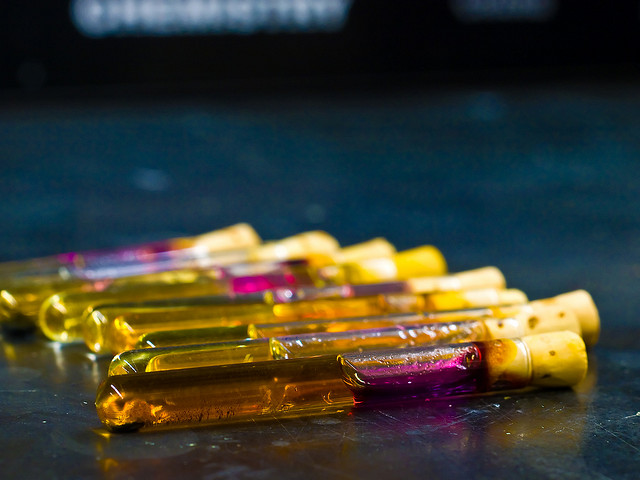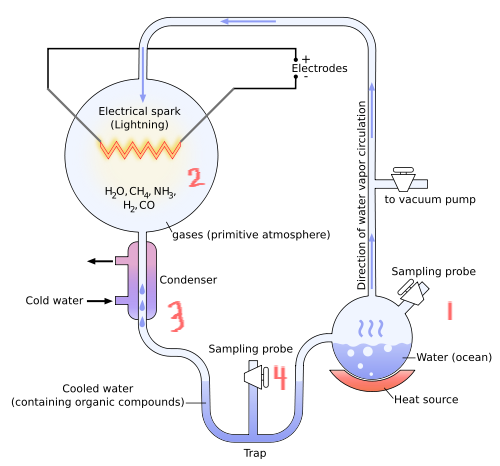Creating the Foundations of Life from Nothing

Photo Credit: canyon289
A few weeks ago, I posted an article explaining the history of Mendelian genetics. I concluded it by detailing the modern understanding of inheritance, in the form of chromosomes, DNA, and genes. But what exactly does that DNA blueprint hold the code for? The answer is simpler than you think: it’s just proteins! That fact stuns most of my students. Your genes, the basic units of hereditary information, are just codes for the construction of proteins. It could be argued that proteins are the workhorses of living organisms and are essential for life, as we know it.This article will talk about how the building blocks of proteins were created in a lab, using little more than the gases abundant early in earth’s history and an electric spark.
Proteins: What They Are and Why We Need Them
Proteins are the restless workers of your body. They perform a dizzying amount of processes, from speeding up reactions to physically “walking over” molecules from one part of a cell to another. Amino acids are the tiny units that line up to make a fully formed protein; they are so important to your body that one miniscule change in the 3 billion base pairs can induce devastating diseases like cancer, cystic fibrosis, and others. No, seriously, they really walk. Refer to the video below for computer-simulated proof:
Miller-Urey Experiment Walkthrough
Earth before life was a toxic, hostile environment. Rampant volcanic eruptions and massive thunderstorms created an atmosphere that is believed to have been abundant in carbon dioxide, hydrogen gas, methane, and hydrogen sulfide, among other gases.
Stanley Miller and Harold Urey performed the most famous experiment to synthesize molecules essential to life by replicating the earth conditions mentioned above. Follow along with the numbered steps and take a journey into creating amino acids: the building blocks to proteins and thus the underpinnings of all known living organisms.

- Water is heated up and vaporized to mimic the moist atmosphere of pre-biotic earth. It travels through the tubes until it reaches the main “gas orb.”
- The orb contains the four gases thought to be present billions of years ago. In addition to the gases, a circuit is set up to evoke electric sparks: a lightning storm in a bottle, if you will. The sparks provide the energy to speed up the necessary reactions.
- The amalgam of gases and water vapor is now cooled and condensed back into liquid form. This drips down into the trap where the results are recorded
- And what surprising results they are! Miller and Urey discovered that within 24 hours, the liquid inside the sampling probe turned pink and contained 11 different amino acids (modern experiments synthesized all 20 of the amino acids our proteins utilize today).
From gas to amino acid in just a day, now that’s crazy science. I hope it gives you a bit of insight into how the first cells could’ve been made billions of years ago and maybe inspires you to try out an experiment of your own…


No comments